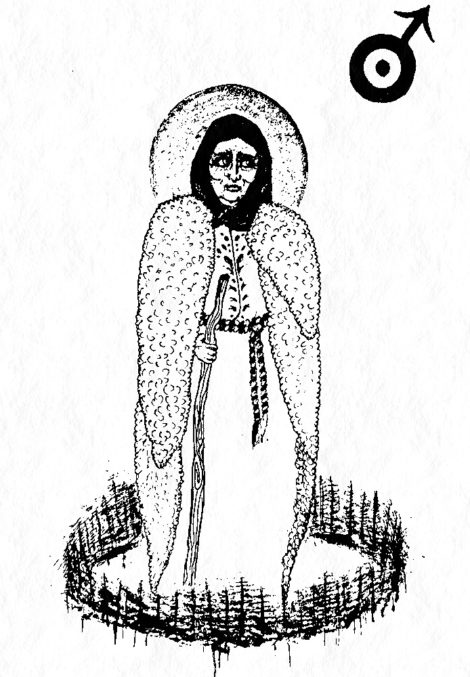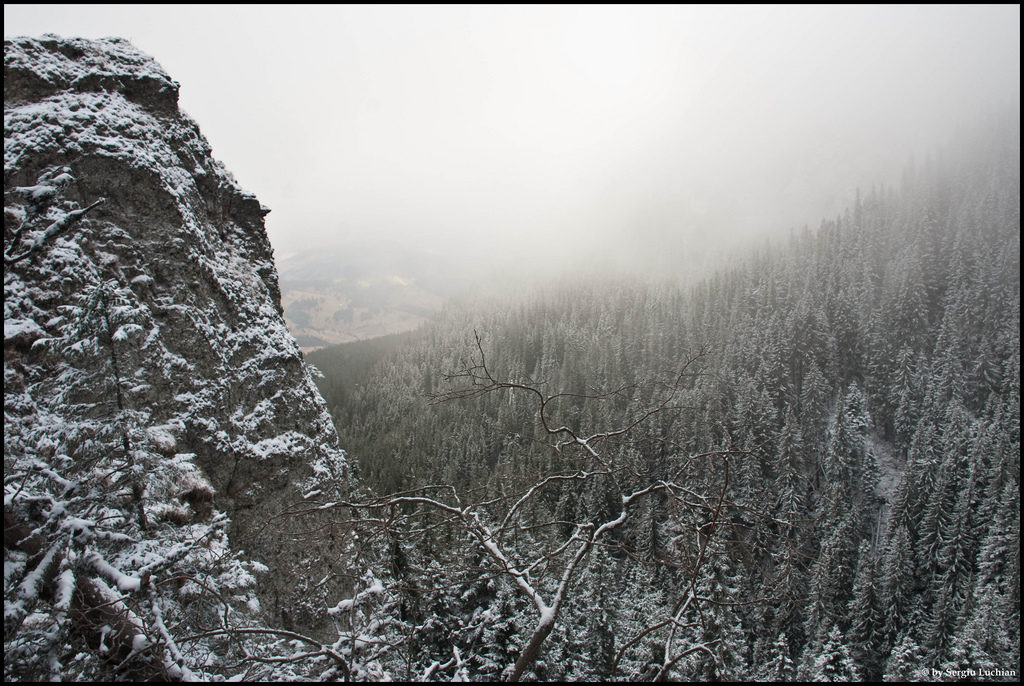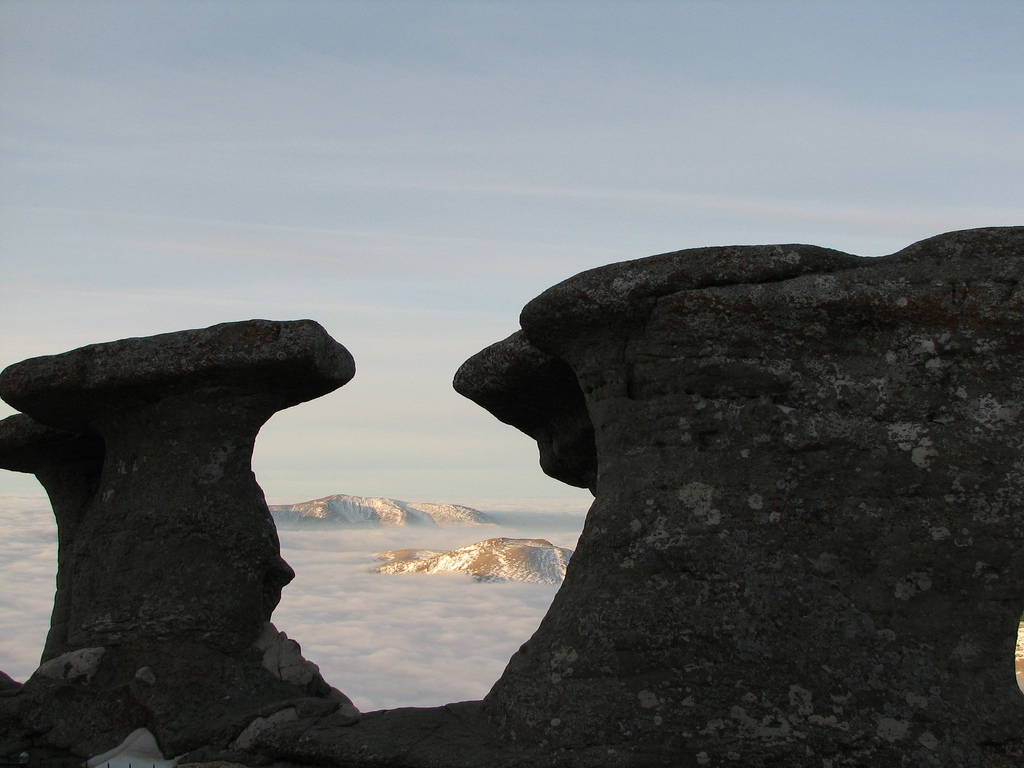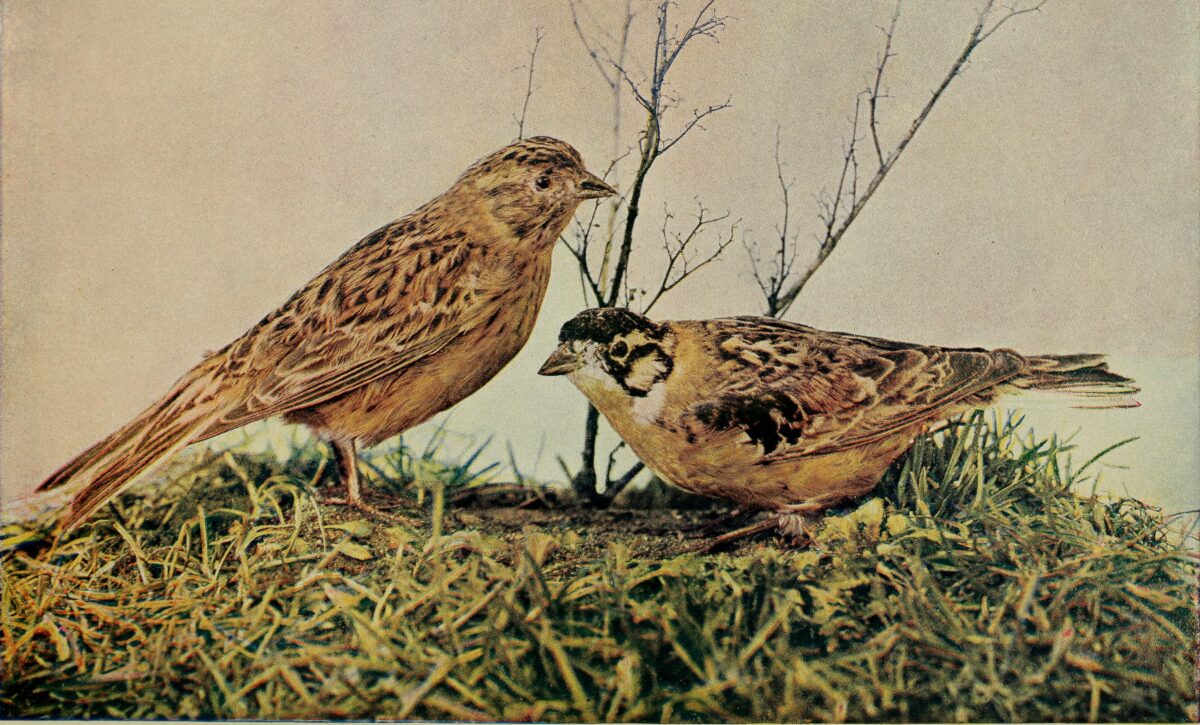Baba Dochia is one of the most fascinating mythic figures in Romanian folklore, appearing at times as a saint, a Dacian princess fleeing the Roman army, or even a wicked mother-in-law. However, at her core, she is the personification of the harsh and cold spirit of winter. She ages with the cold season, carrying the weight of winter in her many coats, only to die and be reborn with the arrival of spring. This endless cycle of aging, death, and renewal reflects the rhythms of nature and anchors her role in the cultural imagination of Romania as both a progenitor and a guardian of the land’s seasonal transformations.

Mother of Dragobete and challenger of Mars, Baba Dochia is considered an aspect of the Agrarian Goddess who dies and is reborn each March. Illustration by @crowhag
The Hag Between Winter and Spring
Baba Dochia’s stories associate the passing of the seasons with moral and social lessons. This is evident in the legends where she appears as a mother-in-law. The tension between Baba Dochia and her daughter-in-law symbolizes the opposition between the dying Old Year, embodied by Dochia, and the freshly born New Year, represented by the younger woman. Winter and spring, cold and warmth, barrenness and fertility, are expressed through the trials and interactions between the two women.
In some tales, Baba Dochia is the mother of Dragobete, the patron of spring, love, and birds. To her dismay, he marries the sister of Lăzărel, the young patron of vegetation. Lăzărel is celebrated on the Saturday before Palm Sunday, with young women, named Lăzărițe, dressed in white and adorned with flower crowns, performing a circular dance that enacts the life, death, and rebirth of the vegetation god.
When Dragobete marries Lăzărița, Baba Dochia is displeased and imposes impossible tasks on her daughter-in-law, such as gathering ripe strawberries in the middle of winter, washing black wool until it turns white, or turning white wool into black. Despite this, the daughter-in-law often succeeds through divine intervention, showing that Baba Dochia’s reign, much like winter, must come to an end.
In a more popular legend, Baba Dochia finds ripe strawberries on the first day of March and believes that spring has arrived. So, she prepares her flock of sheep for the mountain pastures. Other shepherds warn her that it is too early and that angering the god Mars, who presides over the season, could bring disaster. Dochia dismisses these warnings, mocking the god by saying that she will put little Mars through a little nail. She dresses in nine sheepskin coats (twelve for each month of the year in some regional variations) and begins her ascent into the mountains.
As she climbs, the weather turns harsh. A sudden frost, sleet, or relentless rain begins, lasting nine days and nights. The coats become unbearably heavy, and she sheds one each day. On the ninth day, exposed to the cold, she and her flock are transformed into stone. The rock formations in Ceahlău and Bucegi are said to be the petrified figures of the old woman and her flock, known locally as Babele or The Old Hags.
In some variations, the shedding of coats occurs not because of the rain, but in response to unexpected heat. In others, Baba Dochia is also spinning the rope of Mărțișor during her ascent. Much like the Fates who spin the thread of life at a child’s birth, Dochia spins the thread of the year at the birth of calendar time, in spring. Her petrification, sometimes interpreted as a divine punishment from Mars, who borrows cold days from February to overpower her, represents the end of the Old Year.

On Baba Dochia’s trail in the Ceahlău Mountains, the legendary rock bearing her name marks where she was said to have turned to stone from the cold; it can be reached via the blue-marked route from Izvorul Muntelui Chalet. Photo credit: Flickr.
Divining the New Year
Baba Dochia’s story is reenacted during the first days of March, a time when women use this moment to divine the year ahead. These first nine (or in some regions twelve) days of March are considered cosmogonic because they mark the transition between winter and spring, the Old Year and the New.
Women choose one of the 9-12 days as their own Hag Day or assign it to another woman, and by observing the weather on that day, they can predict their temperament, fortune, and general disposition for the coming year.
The most common criterion for assigning the days is age. Older women are often given the earlier days, while younger women receive later ones. On their assigned day, if the weather is sunny, warm, and fair, the woman is believed to have a bright, cheerful, and fortunate year ahead. However, if the day is cold, rainy, or stormy, it is taken as a sign that she may experience difficulties, misfortune, or a harsher temperament.
Baba Dochia’s myth is thus a personal, social, and ritual experience for women. Through this custom, they symbolically inherit a day from Baba Dochia, the mythical ancestor of the land, sharing in her power and temperament, as changing and transformative as the weather.

The Old Hags are a natural rock formation on the Bucegi Mountains plateau, where Baba Dochia was said to freeze into stone alongside her flock of sheep. Photo credit: Flickr.

www.Nettlesgarden.com – The Old Craft





Georgina | June 30, 2025
|
My stiry